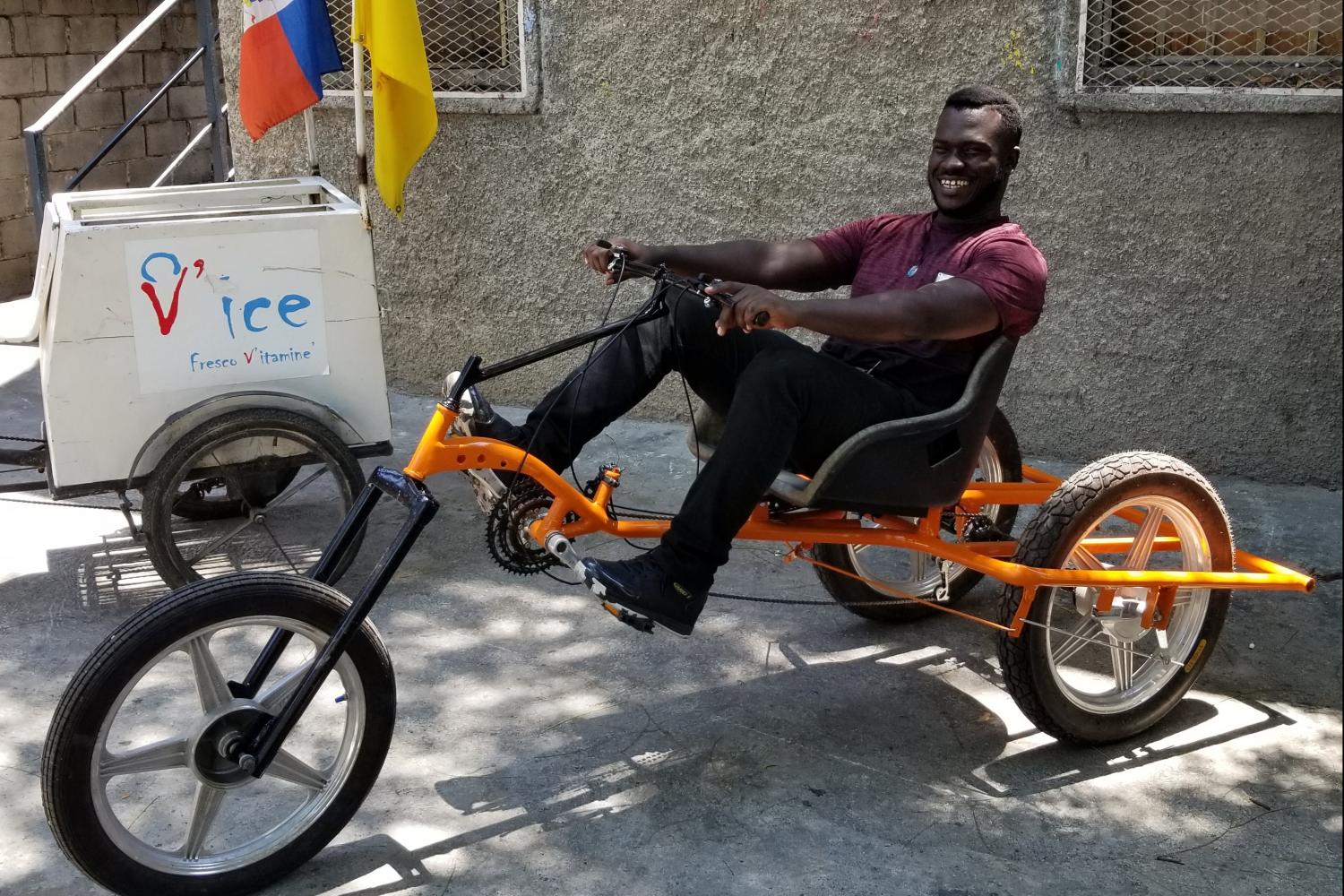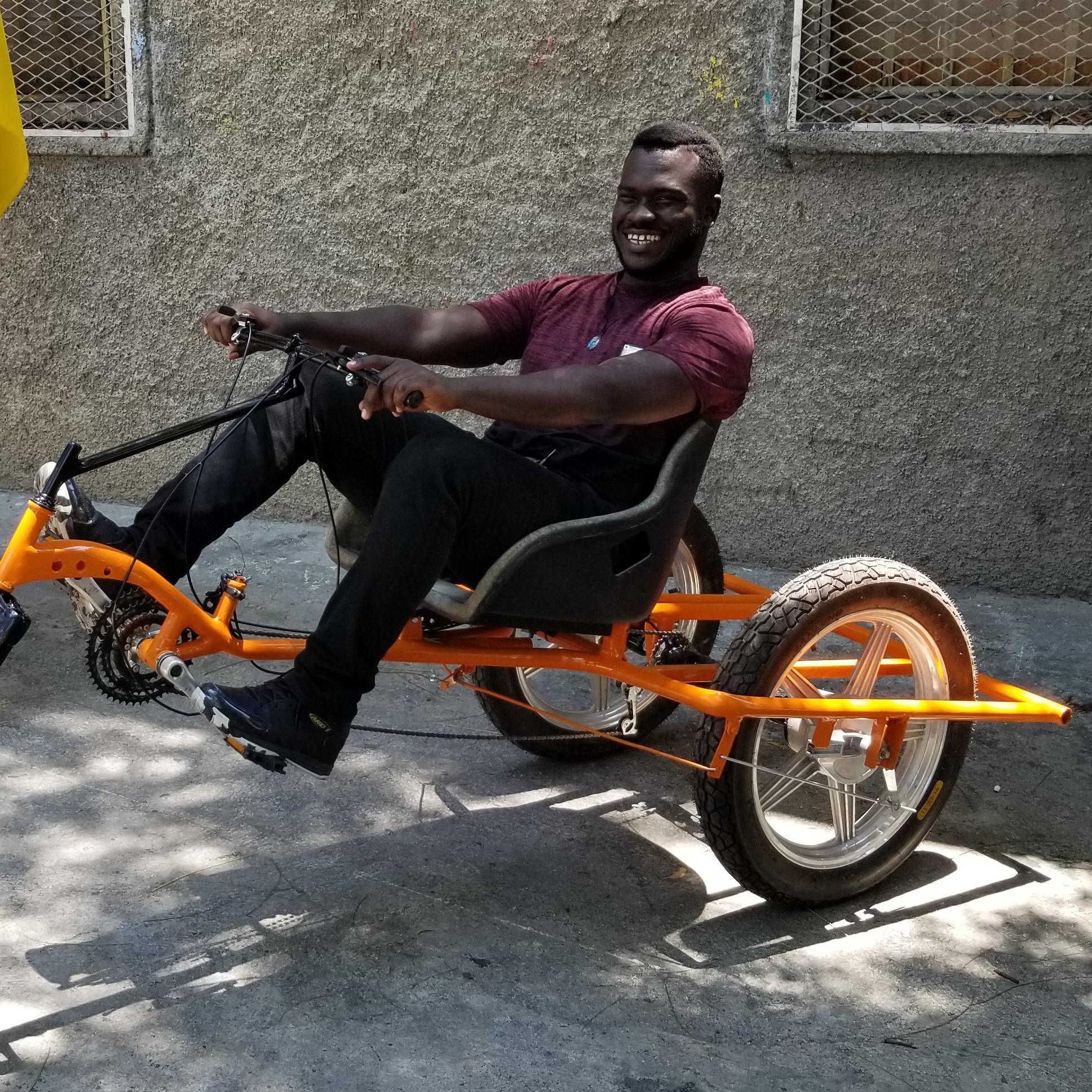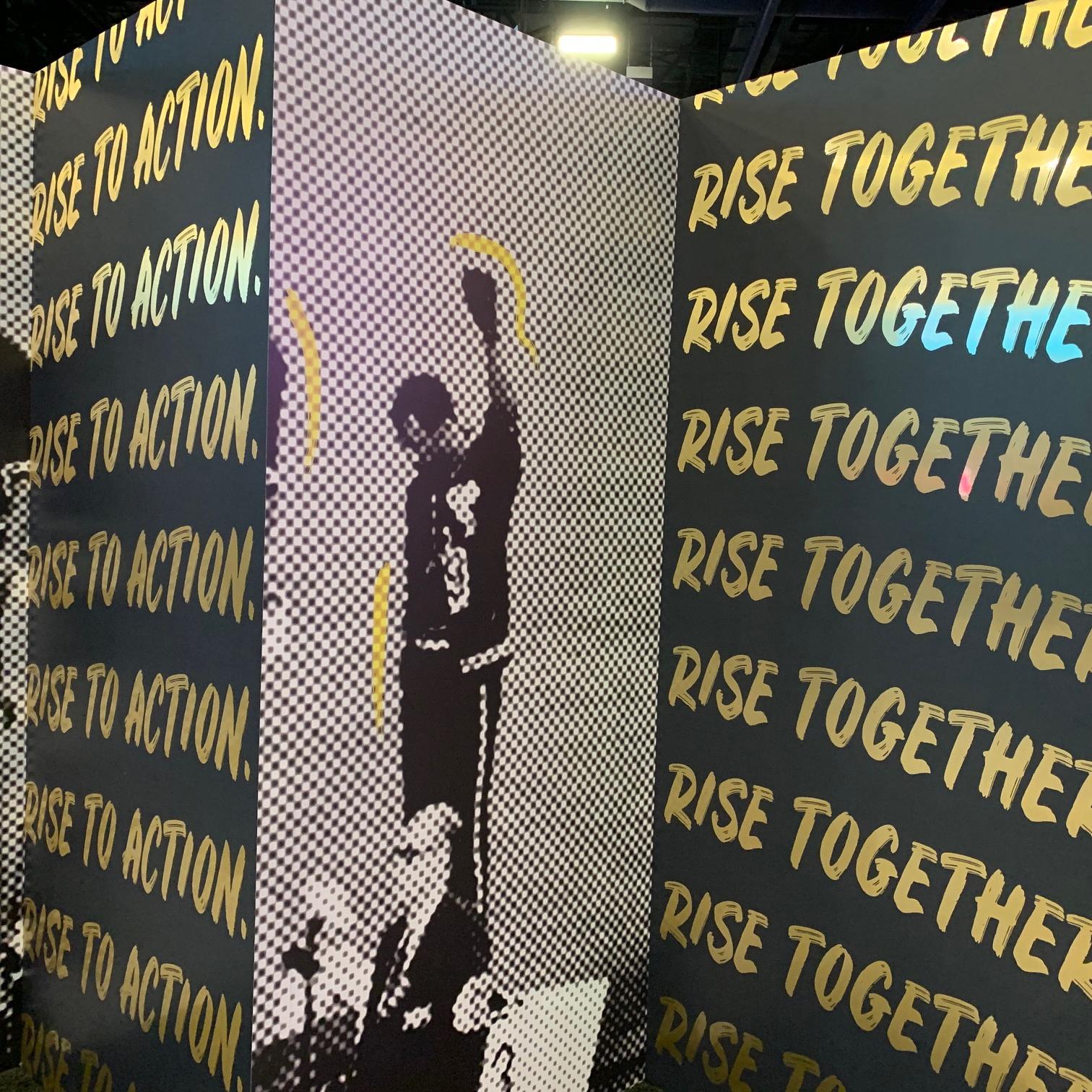UPS Tired of Waiting for Electric Vehicles, Decides to Make Its Own


Fleet managers seeking zero emission vehicles have to play a waiting game, while major auto makers slowly adapt their factories and supply chains to new technology. Now, UPS is trying something new: it has invested in an electric vehicle startup called Arrival. The equity arrangement gives UPS dibs on the first 10,000 vehicles produced in Arrival’s new factories.
Purpose-built electric vehicles for special tasks at UPS
Aside from enabling UPS to cut the line for electric vehicles — and cut emissions from its delivery fleet — the company also expects its collaboration with Arrival to create new efficiencies that reduce costs.
As a general rule, electric vehicle fleet owners can anticipate lower costs for maintenance and repairs because electric systems involve fewer moving parts than internal combustion engines. Arrival builds on that advantage by deploying a modular design and standardized parts, including lightweight materials that it fabricates in-house.
To gild the electric vehicle lily, Arrival is also working with UPS on advanced driver assist technology tailored to UPS depots.
If all goes according to plan, the automated system will create new efficiencies in back-office activities as well as in maneuvering, loading and unloading within the depots.
To scale up electric vehicle manufacturing, first scale down
Perhaps the most interesting aspect of the new partnership is Arrival’s unique manufacturing model.
Instead of relying on large, centralized factories, the company plans to establish a number of “micro-factories.”
Depending on where and how the new factories are sited, the arrangement could provide UPS with an opportunity to bring new jobs into communities that need them, rather than encouraging workers to uproot and follow jobs to remote locations.
Aside from the potential benefit to community well-being, the micro-factory concept also provides opportunities for cutting emissions related to worker commutes.
More community benefits from electric vehicles
The idea of small scale, local auto production may seem like a throwback to the days before Henry Ford began mass-producing the Model T. However, 3-D printing and other new technologies have opened up new opportunities for ramping down the size of factories, while also making customization more economical and efficient.
The small-scale manufacturing model caught the eye of the U.S. Department of Energy (DOE) several years ago. In consideration of past collaborations between the DOE and UPS, it’s possible that the agency will keep an eye on the UPS-Arrival venture.
UPS began exploring the idea of a technology partnership with Arrival in 2016, the same year that the company received a DOE grant to help develop a drive-over electric vehicle charging system with vehicle-to-grid capability.
Vehicle-to-grid refers to the idea that electric vehicles are mobile energy storage systems. With the right equipment, the vehicle battery can supply electricity to the local grid or to buildings, field lights and other equipment including other vehicles.
The new chargers could potentially provide both UPS with additional community benefits, by enabling it to provide power for emergency responders and other users in case of a local blackout.
Whatever happened to natural gas?
UPS’s big move into electric vehicles is also interesting, given that just a few years ago the company was championing compressed natural gas as the clean fuel of the future. However, falling costs and improvements in electric vehicle technology are putting a damper on the prospects for expanding the use of natural gas in the transportation sector.
To be clear, UPS is still dedicating resources to compressed natural gas. Just last December, the company announced a new round of 6,000 CNG trucks at a cost of $450 million.
That’s not necessarily good news for natural gas stakeholders, though. Thanks to an alternative fuel onboard system provided by the company Agility Fuel Solutions, the new CNG trucks can include hydrogen among a roster of other fuel options.
Agility also includes hydrogen among its roster of options. That’s another interesting angle, considering that UPS has already shown an interest in pursuing electric vehicles equipped with hydrogen fuel cells.
Though the primary source for hydrogen today is fossil gas, Agility’s connection with renewable sources — including wind and solar power as well as biogas — creates the potential for a renewable hydrogen pipeline.
In light of new evidence about the public health and environmental impacts of the fossil gas supply chain, UPS’s shift to a more sustainable transportation model will serve both the bottom line and its community engagement profile, too.
Image credit: UPS
Who Won (and Lost) Cause Marketing at Super Bowl LIV


Every year, there are two extraordinary competitions on Super Bowl Sunday: the one between great athletes on the field, and a second between the world’s greatest marketers who dream up the most creative concepts (as in Emily Hampshire of Schitt’s Creek pairing with Charlie Day for that oft-discussed Super Bowl ad for P&G’s Tide ad, shown above) to compete for your attention in the most expensive seconds that money can buy.
An increasing number of Super Bowl ads have integrated some form of cause marketing into their narrative. Yet, while the advertising teams behind these concepts compete at the highest level to produce the most powerful ads possible, the social impact they claim to promote is often lacking.
Scoring Super Bowl LIV cause marketing ads
So how did this year’s Super Bowl ads move the needle on social impact? We classified a number of the brands that engaged in “cause marketing” using the following rubric:
Fit: Does the cause make sense for the brand? Score: X points out of 3 (/3)
Partnership: Does the brand have a substantiated partnership connected to this effort? Score: X/1
Activation: Does the ad inform and activate viewers? Do people care more about the cause because of this ad? Score: X/3
Long-term: Is this a long-term relationship? Will this relationship benefit this work? Score: X/3
The head scratcher
- The ad: Spotlights the efforts of the University of Wisconsin School of Veterinary Medicine in saving Scout, the WeatherTech dog.
- The activation: Donate to University of Wisconsin School of Veterinary Medicine by visiting weathertech.com/donate.
- Social good effort: Although the ad’s CTA is to raise money for the University of Wisconsin’s Veterinary program, the donation page is primarily dedicated to WeatherTech products.
- Score:
- Fit - 1/3
- Partnership - 1/1
- Activation - 2/3
- Long term benefit - 2/3
- TOTAL - 6/10
- Our take: The story of University of Wisconsin saving Scout’s life is heartwarming, but the connection to WeatherTech left us scratching our heads. You have to really dig to learn that Scout belongs to WeatherTech’s Founder + CEO, and that after his positive experience with the Veterinary program, he wanted to find a way to support them. Getting featured in a Super Bowl ad seems like a pretty good thank you. Still, WeatherTech could have done a more thorough job of establishing the link, and explaining its relationship and financial commitment to the University of Wisconsin, especially on the related website.
A Missed Cause Marketing Opportunity
- The ad: Features Katie Couric, astronaut Nicole Stott, Taraji P. Henson (star of Hidden Figures), Busy Phillips, and Lilly Singh in a spot inspired by 2018’s historic all-female spacewalk.
- The activation: For every tweet with the hashtag, #MakeSpaceForWomen, Olay will donate $1 to Girls Who Code.
- Social good effort: According to the campaign site, P&G (Olay’s parent company) is a Girls Who Code Summer Immersion Program partner. However, the ad fails to communicate this or meaningfully connect to the effort.
- Score:
- Fit - 1/3
- Partnership - 1/1
- Activation - 1/3
- Long term - 1/3
- TOTAL - 4/10
- Our take: We are all in for gender equity. That notwithstanding, this ad confused us. The connection between skincare, celebrities, space travel and coding feels awkward. It was only after additional research that we learned Olay’s parent company, P&G, has a standing partnership with Girls Who Code (which is a great organization!). In this case, Olay missed the opportunity to showcase their actual partnership with Girls Who Code and why it matters to them.
Love the program (not the ad)
Michelob ULTRA Pure Gold | 6 for 6-Pack
- The ad: Replete with farmers, flash mobs, and football fans – this spot promotes Michelob’s new(ish) organic beer and highlights their pledge to transform America’s farmland to organic, inviting every beer drinker to help.
- The activation: Buy a 6-pack and help transition 6 square feet of farmland to organic.
- Social good effort: Last summer, Michelob launched its impressive Contract for Change program, which supports farmers transitioning their barley crops from conventional to organic. The 6 for 6-pack program directly engages consumers in Contract for Change’s mission.
- Score:
- Fit - 3/3
- Partnership - 1/1
- Activation - 1/3
- Long term benefit - 2/3
- TOTAL - 7/10
- Our take: Although we didn’t love the actual ad (we’re not marketing people, but…), Michelob Ultra’s Contract for Change program promoting organic farming is important, especially for a major beer manufacturer. It makes a ton of sense for their brand, and a ton of sense for the future of ag. We did note that the website’s fine print states that the cost of transitioning 6 square feet of land is $0.02, and their campaign commitment cap is $1 million. Over the course of the 2-year campaign, Michelob would have to sell 50 million 6-packs of their organic beer to donate the full $1 million. We are hoping their committed to the gift regardless of sales. In the end, while the ad and the activation didn’t do Contract for Change justice, we’re still excited about this cause marketing campaign.
Almost, but not quite: PSA without a CTA x2
Microsoft | Be The One / Katie Sowers
- The ad: Showcases San Francisco 49ers offensive assistant coach Katie Sowers and her historic path to becoming the first woman and first openly gay person to coach in the Super Bowl.
- The activation: None.
- Social good effort: The ad brings attention to the importance of trailblazers like Coach Sowers in breaking boundaries with the message, “All it takes is one.”
- Score:
- Fit - 1/3
- Partnership - 0/1
- Activation - 0/3
- Long term - 1/3
- TOTAL - 2/10
- Our take: This was an awesome ad. It made us proud and excited for the 49ers, Katie Sowers, and football. However, we wish they had pushed the idea from inspiration to activation by partnering with an organization that builds skills and confidence in girls. (We’re inspired by Play Like a Girl, Girls in the Game, and Girls on the Run just to name a few.) While we loved the idea, next year, we hope Microsoft takes the ball further down the field.
- The ad: Promotes the NFL’s Inspire Change initiative through a PSA about the tragic police shooting death of Corey Jones, cousin of retired wide receiver Anquan Boldin. Corey Jones was waiting for a tow truck when he was shot.
- The activation: None.
- Social good effort: The ad highlights the Players Coalition, an organization Boldin and others founded to combat social injustice and racial inequality in America. Inspire Change is the NFL’s platform to showcase how players, owners and the League are working in community on these pressing matters.
- Score:
- Fit - 3/3
- Partnership - 1/1
- Activation - 1/3
- Long term - 1/3
- TOTAL - 6/10
- Our take: The ad is an authentic and powerful tribute, which uses the most visible platform in America to get people talking about these issues. For this, we really commend the league. Many have rightly pointed out that on an issue as complex and pressing as racial justice, the ad avoids pushing the viewer to engage and be part of the change, which we think would have made this piece even stronger.
Not enough there there
Audi, GM and Porsche all introduced their new electric vehicles with spots in the Super Bowl. The ads, ranging from Audi’s Frozen theme, to GM’s electric Hummer promotion featuring Lebron James, to Porsche’s “heist”, send the message that driving sustainably is still “cool” and that switching to electric doesn’t mean sacrificing performance.
Our take: If these companies wanted to push the conversation around sustainability, they could have done so in a much more powerful way (perhaps by partnering with any of the thousands of organizations standing on the front lines of climate change...). These ads flirted with cause, but in the end were just … ads.
Image credit: Tide
GM Seeks Competitive Edge in a 100 Percent EV Future


General Motors (GM) has had a mixed reputation with electric vehicle fans for almost 25 years, starting with the ill-fated EV-1 in the 1990s. Skepticism over the company’s intentions for zero-emission mobility reached a fever pitch last fall, when GM sided with the Trump administration in an effort to override California’s strict emissions standards. Now that the dust has settled, however, it appears that GM has positioned itself to dominate as the auto industry pivots to battery power.
Electric vehicles and emission standards: There they go again
GM launched the EV-1 all-electric vehicle to much fanfare in 1996, in response to new air quality standards imposed by California.
However, the company manufactured little more than 1,000 of the cars before pulling them off the market in 2001. Among factors dooming the EV-1 was a relatively low range of 100 miles per charge. The emerging popularity of hybrid electric vehicles also thwarted the attempt to sell the public any cars running 100 percent on electricity.
While the EV-1 debacle was unspooling, industry observers also noted that GM was also part of a successful lobbying effort aimed at rolling back California’s new emission standards.
Twenty years later, a similar scenario appears to be playing out. Last fall, GM joined Toyota, Hyundai, Mazda, Nissan, Kia, Subaru and Fiat Chrysler along with the Trump administration in legal actions challenging California’s right to set its own fuel efficiency and emissions standards over national standards.
Last week Electrek took a deep dive into the issue and suggested that the move may reflect a strategy for gearing up to compete against Tesla and other all-electric startups, which are free to focus exclusively on electric cars.
The market for all-electric vehicles is still relatively small, so auto makers like GM can still make billions selling petroleum-fueled vehicles. That could potentially provide a firm financial platform for future investments in electric vehicles.
GM sees the electric vehicle light
As Electrek emphasizes, GM does not necessarily support rolling back federal fuel efficiency and emission standards. Its main concern is selling cars into a unified U.S. market, not turning back the clock on air quality.
With that in mind, GM has been sending clear signals that it expects the U.S. auto market to move rapidly in the direction of 100 percent all-electric.
GM introduced the Volt electric hybrid sedan in 2010 only to withdraw it from the market in 2018, having introduced the all-electric Bolt crossover in 2016.
In support of the Bolt and other electric vehicles, GM also began ramping up its battery supply chain several years ago. As the single most expensive component, batteries are the key to lowering the purchase price. GM’s series of battery-related moves included a $28 million investment for a new EV battery research center in Michigan, building on a previous $6 million expansion of the facility.
One giant step occurred last December, when GM announced that it would partner with the company LG Chem to manufacture EV batteries in Ohio. The $2.3 billion joint venture is aimed specifically at making electric vehicles more affordable by slashing the cost of EV batteries.
The company’s most recent announcement came last week, when it announced a new $2.2 billion investment aimed at converting its massive Detroit-Hamtramck plant to produce all-electric trucks and SUVs exclusively.
A slow transition for electric vehicles
Despite the ramped-up activity in the electric vehicle field, GM is still investing in improvements to its internal combustion engines.
In January, for example, the company announced a new $40 million investment aimed producing engines at its Spring Hill manufacturing plant in Tennessee.
Electric vehicle sales only accounted for 2.5 percent of the global market last year, so there is still plenty of room for companies like GM to sell petroleum-fueled vehicles.
Nevertheless, signs of a rapid change in the market are emerging, and the company’s recent investment in battery technology may position it to compete with Tesla and other auto makers on cost.
It also looks like GM’s focus on all-electric over hybrid technology will pay off. Last year, all-electric vehicles dominated the non-ICE (internal combustion engine) market segment at 74 percent of sales globally. Meanwhile, hybrid sales declined significantly from 2018 to 2019.
If the car-buying public is still holding out for the price of electric vehicles to drop, GM is one company that will be ready to welcome them with open arms.
Meanwhile, GM is prepping drivers to make the leap from petroleum to electric mobility. In the latest move, last week the company unveiled a zero emission version of its notorious gas-guzzling Hummer, as if to reassure drivers they can still make a grand impression without harming the planet.
In Haiti, This Social Enterprise Creates Jobs with a Side of Nutrition


In January, Haiti observed the 10th anniversary of the devastating 2010 earthquake.
The Haitian government put the earthquake death toll at over 300,000, along with hundreds of thousands of survivors who were displaced. Now, 10 years later, Haiti remains a country in peril.
Today, over 6 million Haitians live below the poverty line of less than US$2.41 per day. Over 58 percent of all households in Haiti are food insecure. Around 30 percent of children under 5 years old are stunted. Anemia is rampant, afflicting two-thirds of children under 5, 75 percent of children under 2, and 60 percent of pregnant women. With over 21 percent of the population aged 15 to 24, Haiti has an unemployment rate over 70 percent and loses over US$56 million in GDP annually to vitamin and mineral deficiencies.
International aid offers on temporary relief at best
Many international aid organizations remain out of touch with the on-the-ground realities affecting the very population they aim to serve in Haiti. Providing temporary aid, they fall short of investing in sustainable and scalable enterprises focused on the bottom of the pyramid (BoP), a population barely making $1 to $3 per day.
With 90 percent of the jobs in Haiti being in self-employment, the social impact of a steady paycheck is crucial to the economic stability of the country. Small businesses can play a critical role in rural, low-income communities and cities as job creators. While temporary relief aid lifts poverty levels, when aid dries up with no sustainable programs left, poverty and hunger descend across populations most in need.
How micro-franchise can help reverse poverty levels through market creation
Since December 2018, one nonprofit in Haiti has remained focused on a scalable micro-franchise business model addressing poverty while creating jobs for the poor. The Social Ventures Foundation (SVF) social micro-franchise, V’ice Haiti, located in Port-au-Prince, focuses on employing the poor to deliver sustainable vitamin and protein supplementation products to poor customers at an affordable price. Its innovative micro-franchise business model focuses on market and job creation, facilitating local manufacturing, and distribution of two nutritional products.
Self-employment, not employment, constitute 90 percent of the jobs for the poor. Many top-down international development projects reward the “have’s” instead of the “have nots.” V’ice Haiti’s bottom-up model enhances the wages of the very poor, rewarding them with equity in the enterprise they help build.
A product taking on two distinct challenges in Haiti
V’ice Haiti’s innovative made-in-Haiti three-wheel recumbent “V’ike” allows V’ice products to be sold on the streets, and for supplies and ice to be delivered to micro-franchisees selling from made-in-Haiti V’ice Boxes (insulated with Styrofoam recycled from Port-au-Prince streets).
Enhanced wages and equity is at the core of SVF’s mission to sustainably lift the livelihoods of the poor. Instead of poverty reduction, SVF’s model focuses on market creation at the bottom of the pyramid, providing smaller-scale, incremental sales opportunities at the last mile enabled by local manufacturing and use of local resources — key to a market creation strategy. This ultimately minimizes costs while maximizing outcomes.
Following extensive market research, V’ice accomplished its proof of concept and opened its first hub and office in Port -au-Prince. To date, it has provided 15,000 Haitians with vitamin and protein supplementation by two micro-franchisees whose daily earnings were previously $1 to $3 and increased to $3 to $5. This was accomplished after only one year during which the country witnessed the worst social unrest of the last 40 years. The Foundation is now focused on rolling out initial commercialization in Port-au-Prince, which will eventually create up to 90 jobs and provide vitamin supplementation for 5,000 Haitians daily.
Local supply chains can cement long-term success
Partnering with local businesses and utilizing local resources and manufacturing is key to cementing long-term success. V’ice Haiti sources clean water from dloHaiti, Haitian corn flakes from Caribbean Food Manufacturing, refined, enhanced vitaminized flavored toppings from Griffith Foods International, and manufactures its V’ikes and V’ice Boxes with PitBull Kustoms.
Creating a long-term sustainable business with a tangible social impact that addresses the needs of the poor can be achieved with a micro-franchising business model. The model delivers sustainable sources of income, creates self-employment opportunities for the poor in various market segments, and shares equity.
Implementing a micro-franchise business model allows social enterprises to scale and use the blueprint in other developing nations. A bottom-up approach allows social enterprises to boost local employment by creating markets while achieving additional essential development goals.
With plans to roll out V’ice Haiti nationwide and reach up to 70 percent of Haiti’s urban population, future scaling plans call for distribution in 23 coastal, non-mountainous, urbanized areas utilizing a hub-and-spoke system that creates more than 50 V’ice hubs with up to 80 micro-franchisees each to provide daily vitaminization for over 275,000 Haitians.
Business models that offer valuable resources for micro-franchisee training and deployment can have a positive impact on hundreds of thousands of residents in each hub. V’ice Haiti hopes to ultimately reach 61 percent of Haiti’s urban population, creating 600 sustainable jobs for the poor.
Following a successful initial scaling, V’ice social franchise model can be replicated in other developing nations to address the United Nations Sustainable Development Goals (SDGs).
Image credit: Social Ventures Foundation
C&A Launches Groundbreaking Sustainable Denim


European fashion retailer C&A launched the world’s first Cradle to Cradle certified platinum denim fabric last week, developed in partnership with Rajby Textiles Limited and Eco Intelligent Growth.
Dubbed Beluga denim (shown above), the material is fully renewable, produced within a process that wastes no water, and is completely carbon-neutral in the manufacturing stage. This signifies another leap forward in the pursuit of a circular economy using the Cradle to Cradle standard and another step in C&A's sustainable product journey.
A refresher on Cradle to Cradle certification
Cradle to Cradle Certification signifies the quality of the material from a more holistic point of view, taking into account the impact its production has on people and the environment by grading products on several key metrics. To achieve a high score, a product must be design with chemicals that are safe for the environment and people, it must have a high percentage of reusable materials, be manufactured using renewable energy and use water efficiently. Brands must also be cognizant of the communities and resources that are a part of the manufacturing process.
Developed by the Cradle to Cradle Products Innovation Institute, these product standards are now in their third iteration, with the fourth close to implementation. Public comments on the latest version of the standards closed in October. The standards as they currently exist grade each product via the previously mentioned standards, with those products receiving a score of basic, bronze, silver, gold or platinum. The resulting level of certification is based on the lowest of those aforementioned scores.
The standards are also dynamic, as a renewal process every two years encourages continuous innovation, thus incentivizing constant improvement for all stakeholders. A myriad of products can be scored, and Cradle to Cradle has become notable for consumers in grading the quality of a product in a more sustainable fashion.
The sustainable fashion movement is growing
This isn't the first effort by C&A to produce products at the high end of Cradle to Cradle's standards. The company released gold-level certified T-shirts in 2017 and gold-level certified jeans a year later. This new partnership raises the bar in a way that the company's competitors could become inclined to follow.
C&A's efforts go beyond this particular breakthrough as well. The company helped to found the Organic Cotton Accelerator in 2016, a year after it joined the Better Cotton Initiative. As of February 2018, 70 percent of the cotton C&A sourced was organic, with the goal to reach 100 percent sustainable cotton this year.
With C&A’s decision to make this innovation in denim manufacturing open-source, the oft-criticized fast fashion industry has taken a step forward in showing that it can become more sustainable and responsible. But the criticism won’t go away anytime soon — technology reporter Terry Nguyen, writing for Vox, noted: “The blindingly fast pace at which clothes are now manufactured, worn, and discarded means that they’ve become more disposable, more commodities than keepsakes, and that shoppers are essentially conditioned to expect a constant stream of new items.”
There are signs, however, that the younger generation of consumers want to see a change for the better in this industry. To that end, C&A’s competitors — which include Zara, Uniqlo and H&M — now face more pressure to show that their supply chains, as well as the clothing sold at their stores, can be made ethically with less impact on the planet.
Beluga denim is just the start.
Image credits: Eco Intelligence Growth
Suavs Recycles Water Bottles Into Sneakers


Take a sip out of that disposable water bottle that you bought when you thought no one was looking. Then hold the water bottle out and look at it as if for the first time. Notice I said look at it, don’t crush it, because the clear, corrugated plastic is sharp enough to cut you if you crack it. As you hold it in your hand, ask the question consumers around the globe are wondering: Is it possible that recycling water bottles can result in a pair of comfortable sneakers?
Suavs answers a resounding “yes” with a new sustainable sneaker, The Legacy.
Out of Austin, sneakers are a result of recycling water bottles
The shoe company, based in Austin, Texas, recently took its footwear sustainability goals a step further (pun intended) with a knit sneaker that's 100 percent the result of recycling water bottles. The shoe is a redesign from Suavs’ product line made out of recycled water bottles and 100 percent vegan materials.
Suavs manufactures travel-friendly shoes that are comfortable and lightweight with a breathable fabric and flexible design. The new product line, branded The Legacy, is a high-top sneaker design that Suavs sells in three earthy colors. According to the company, the comfort and style of the shoes are not sacrificed for sustainability, and the fabric is breathable, sweat-wicking and “ultra-soft.”
Starting this year, Suavs says all of its shoes will be made with this fully recyclable material.
"Our customer feedback on comfort and style is so positive, we thought what more can we do to hold ourselves accountable in working our way towards decreasing our carbon footprint and becoming a more conscious brand?” said Suavs CEO Monxi Garza in a public statement. “I'm thrilled to introduce our new 100 percent recycled knit fabric to Suavs customers and look forward to more ways we can become more environmentally friendly in the new decade."
A small step for circularity
An estimated one million water bottles are sold every minute around the world, according various sources including Rothy’s, a sustainable footwear company that also uses recycled water bottles in its shoe production. Of those, a staggering 91 percent are not recycled, leaving mountains of water bottles destined for the landfill.
The shoe sustainability efforts of Rothy’s and Suavs are one solution for the growing piles of single used plastics including disposable water bottles. An average of eight water bottles are used in each pair of Suavs’ The Legacy, according to the website.
These shoes represent to what Suavs says is the company’s commitment to a “low or negative” carbon footprint, with more sustainability upgrades to come. The footwear company says it will also:
- Use sustainable materials for all new and current Suavs styles by the mid-2020s
- Reduce material waste in production
- Reduce shipping waste by making shoe boxes that can be for shipping to customers and returns
- Use 100 percent vegan materials
- Donate unsold products to charities like Soles4Souls
More footwear brands are using sustainable materials
Sustainability is becoming more entrenched in shoe design and manufacturing, and other companies have caught on fast. The efforts are going beyond recycling water bottles. Last year, Adidas rolled out a new shoe called Futurecraft.Loop that was manufactured out of a single recyclable material. Nike focused more on reducing material waste in shoe production by creating a puzzle-like design for a new shoe, the Atsuma.
Plant-based ingredients aren’t just making the headlines in the food industry; recently Sanuk, a shoe company headquartered in California, released a water-resistant shoe made from a natural rubber from forests in Guatemala. And start-up natural shoe company Allbirds is still manufacturing their Wool Runners design made out of wool, sugar and wood that the company first released in 2016.
And what about Rothy’s, the shoe sustainability company working to divert water bottles from the landfill? So far, Rothy's says it has reused over 37 million plastic bottles to create sustainable thread that is knitted in the shoes. Rothy’s shoes also have other eco-friendly features, including recycled foam insoles, sustainable outsoles, and merino wool sourced from a sustainable sheep farm.
Image credit: Suavs/Facebook
Ways to Grow ESG: Learning from Today’s Corporate Sustainability Leaders


In the past few weeks, many of the world’s largest brands announced ambitious ESG (environmental, social and governance) goals, seemingly one-upping each other on their sustainability commitments and surpassing their existing corporate goals with bold new ones. What do these intrepid proclamations say about the future of ESG and what we can learn from these examples when building out our own ESG plans?
Measurement of ESG matters
When it comes to setting goals, tracking progress is critical to showcasing commitment, building on accomplishments and establishing credibility. Many company leaders have implemented impressive sustainability practices in their business, but they aren’t properly tracking, reporting or building off progress. You can’t advance your goals or share your story without measuring efforts.
Reducing energy consumption is something a lot of companies commit to and track. PepsiCo recently announced it is moving to 100 percent renewable electricity in the U.S., a step toward its already established goal to cut greenhouse gas emissions by 20 percent by 2030. A place to start is tracking small commitments, like switching to LED lighting or smart thermostats, or taking it a step further and installing solar technology. Many of the world’s largest companies are also using third-party rating systems like LEED and WELL and are committed to tracking and measuring energy and water usage, transportation and waste impacts and health and wellbeing, among other factors, in their corporate offices, manufacturing facilities and retail locations.
Integrate your efforts
Tying sustainability and ESG to the core of your business shows you are authentic and “walk the talk.” And, it’s good for business. Today, 85 percent of U.S. investors express interest in sustainable investing strategies and a 2019 CGS survey found that more than two-thirds of respondents consider sustainability when making a purchasing decision.
BlackRock, the world’s largest investor, shared news that it is committed to combatting climate change by making “sustainability integral to portfolio construction” and will avoid companies that “present a high sustainability-related risk.” Microsoft, which announced plans to be carbon negative by 2030, is also investing $1 billion in tools and technology that will undoubtedly help countless others in efforts to reduce carbon output. Making sustainability part of the business plan – having the CEO, company leadership and the board all invested while also engaging employees, customers, partners, the community and other stakeholders – will establish a company as a leader among peers.
Eliminate waste
Nestle shared plans to invest up to $2 billion in sustainable packaging, and Taco Bell set an ambitious goal to make all its consumer-facing packaging recyclable, compostable or reusable by 2025. There are many ways companies can prioritize creating less waste, such as implementing recycling and composting programs at the office, printing less, setting sustainable printing and quantity requirements for collateral and branded items, utilizing packaging that’s been recycled and is recyclable/compostable and committing to more efficient manufacturing practices. There are also certification programs available, such as TRUE zero waste, that enable facilities to pursue and achieve zero waste goals to cut their carbon footprint.
Make it someone’s job
Accountability is one of the crucial components to achieving sustainability goals, and, when it’s someone’s job, that sends a clear message to stakeholders. Starbucks, already a sustainability leader, just hired its first chief sustainability officer and issued a message from its CEO reinforcing its sustainability commitments. While your organization might not be in a position to hire a full-time staff member, take a look at the existing team and see if there is one person or a team of people who can be responsible for creating and implementing your plan. It’s also important to scale plans accordingly and think about what the role would look like if it could be created in the future.
No matter where you are in your sustainability journey, share your story. If you are making authentic and meaningful commitments, engaging the right people and working toward clear goals, you are moving in the right direction for your brand and your business.
Image credit: Markus Spiske/Unsplash
Super Bowl LIV in Miami Offers a Platform for RISE to Take On Racism


This week’s Super Bowl celebration in Miami, in addition to today’s game itself, is a reminder about how sport can bring transformative change. To be clear, the NFL faces plenty of challenges on and off the field, including the sore lack of diversity within its head coaching ranks.
But in addition to all the fan fests, parties and concerts, there is also solid community work happening in South Florida. One organization that has been on the ground during Super Bowl Week is RISE, a New York City-based nonprofit that seeks to harness the power of sport to boost diversity and inclusion while taking on prejudice and racism. Many of the young athletes participating in RISE’s programs across the U.S. could very well be the next LeBron James, or the late Kobe Bryant, of tomorrow: excelling at their sport while raising awareness of problems from poverty to racism.
Raising awareness isn’t enough, however; success on the social justice front means you’ve developed a plan that has a good chance to solve a problem. To that end, over the past few months in South Florida, RISE has been working with community organizations to launch a leadership program designed to support young sports leadership to find ways to bolster social justice and improve race relations. Meanwhile, RISE has been working with current NFL players in a drive to promote the organization’s programs while pursuing social justice.
RISE’s work comes at a time when professional athletes across all sports have felt more empowered to speak out on social issues over the last several years. “[NFL players] are feeling more comfortable that ‘Hey I can have both, I can do things great and well on the field and do some things off the field as well,’” said linebacker Brandon Copeland of the New York Jets when discussing his fellow athletes’ attitude on a RISE podcast yesterday. “And it takes some barriers being broken; it takes some people showing how to do it at a high level.”
Copeland noted how many athletes starring on the court, field or pitch today want to achieve more than just being the best in their sport but leveraging their status to change society for the better: “It’s an amazing time. You see guys taking chances, taking risks and also using their platform.”
Image credit: Lynne Filderman
Lack of Diversity Amongst NFL Head Coaches Draws Attention During Super Bowl LIV


Behind the raucous celebration of Super Bowl Sunday in host city Miami (as shown in the photo above) and beyond, the National Football League has some spider webs looming in the corners.
Just two weeks before the big game, the Fritz Pollard Alliance (FPA) — which advocates for diversity in NFL positions other than “player” — organized a town hall for coaches and scouts in Mobile, Alabama, to discuss the iniquities in their sport.
Only three of 32 current head coaches are Black — this in a sport where 70 percent of the players are Black. The past three years saw 19 head-coaching positions open up, but only two Black coaches were chosen as replacements.
At the town hall, the FPA emphasized that lacking inclusion in hiring could eventually hurt team bottom lines, Yahoo reported.
Moving beyond the Rooney Rule after the Super Bowl
When it comes to diversity in coaching, the Rooney Rule is top of mind. In 2003, the Rooney Rule was set up to help equalize the playing field, but it hasn’t exactly been as effective as hoped. The rule requires owners to interview at least one ethnic minority out-of-house candidate for head coaching and upper-management jobs. During its 17 years in force, though, there has never been more than eight minority head coaches at any one time.
Some argue that the Rooney Rule doesn’t go far enough to bring equity to the hiring process. Jason Reid of The Undefeated identified two flaws in the rule that hold back hiring — interviews don’t have to be serious, and coordinator-level positions, which often lead to head coaching, aren’t included in the rule.
That’s not to say the Rooney Rule hasn’t had a positive impact. There is a marked difference in diversity before and after the rule was established. Reid notes that in the 12 seasons before the rule, the NFL only had six non-white head coaches. In the 12 seasons since then, 14 have been coaches of color.
NFL Commissioner Roger Goodell, however, is not satisfied with that inching progress.
“Clearly we are not where we want to be on this level,” Goodell said last week during the annual State of the League Address. “We have a lot of work that’s gone into not only the Rooney Rule but our policies overall. It’s clear we need to change and do something different. There’s no reason to expect we’re going to have a different outcome next year without those kinds of changes.”
Goodell said the league has meetings scheduled over February to figure out how to achieve more equitable outcomes.
Can equitable hiring improve business?
Those at the Alabama town hall agreed that team owners are the key to increasing the diversity of head coaches.
“What’s really clear, at this point, is that it’s not the league office,” Cyrus Mehri, co-founder of the FPA, said at the event. “The league office has been fighting with us. It’s the owners. We have … spectacular candidates, and we still have decision-making [amongst owners] that’s irrational. I don’t want to pick on anybody. I really don’t. But it’s hard to justify [former Cleveland Browns head coach] Freddie Kitchens being hired and overlooking [Kansas City Chiefs offensive coordinator] Eric Bieniemy.”
Diverse leadership is not only logical; it’s profitable. Consulting Firm McKinsey’s 2018 research found that the most ethnically/culturally diverse executive teams were 33 percent more likely than peer companies to have industry-leading profitability. Businesses that choose not to hire a diverse cohort are 29 percent less likely to achieve even above-average profitability.
The NFL seems to understand the business implications of improving diversity, at least in customer orientation.
The website’s “Commitment to Diversity” reads in part: “Diversity is the right thing to do both for moral and ethical reasons as well as for the long-term business success of the League. To speak effectively to the broad society externally, the NFL must represent and celebrate a broad society internally. We must overcome the existing cynicism by making progress in both the culture and composition of the NFL organization.
The decisions and changes Goodell has promised for next month are reason enough to keep watching the NFL even after Super Bowl Sunday.
Image credit: Lynne Filderman
Sustainable Development Can’t Take a One-Size-Fits-All Approach


The Green Economy Tracker, a new benchmarking tool by the Green Economy Coalition, a group of over 50 organizations and businesses advocating for sustainable development, made its debut last week during the World Economic Forum in Davos. The tool looks at “best in class” sustainable development policies in 20 countries across five themes: governance, finance, sectors, people and nature.
To break it down a little, let’s compare two countries geographically near each other and near the U.S., Costa Rica and Trinidad and Tobago, and see what the Green Economy Tracker says about them and their progress. First, a little context.
Focusing on sustainable development in the Caribbean
Both countries are located in the Caribbean, one of the areas in the world most vulnerable to climate change. Many countries in the region have already begun to feel the effects with increasingly intense hurricanes and flooding. And the costs have the potential to be enormous, ranging on average between 1 percent and 6 percent of the region's GDP, but those estimates could be much larger if a particularly strong storm hits. Recovery from Hurricane Dorian, for example, is expected to cost the Bahamas around $3 billion. In addition to mitigation efforts, Caribbean countries also need to think about building resilience to climate change impacts.
But just like other regions in the world, there is a lot of diversity between countries, and the Caribbean is no exception. Costa Rica and Trinidad and Tobago sit comfortably at the top of most lists for wealth in the region. They make an interesting sample for the region in the Tracker.
How the two countries stack up on climate
Costa Rica’s biggest economic driver is tourism, and much of that is their famed ecotourism industry. The country has marketed itself for years as the most sustainably-minded country in the region. So, it is perhaps not surprising that Costa Rica ranks high in the Green Economy Tracker. The country has twice topped the New Economic Foundation’s rankings for sustainable development, it generates almost all of its electricity from renewable energy and has a strong plan to go carbon neutral by 2050.
Furthermore, Costa Rica is also one of a few countries that is on target to meet the Paris Agreement’s commitment to keep temperatures below 1.5 degrees Celsius. The Tracker gives Costa Rica’s policies high marks, but with a little less enthusiasm for its policies on green jobs and pro-poor policies. The country has a problem with income inequality and its financial situation is fragile, causing concern about its ability to ultimately meet its goals, though the signs are still encouraging.
Trinidad and Tobago often tops lists as the wealthiest country in the Caribbean. Its income source could be seen as the exact inverse of Costa Rica’s. It has large reserves of oil and gas, and the petroleum sector provides 35 percent of its GDP, but only five percent of its jobs. Fuel subsidies mean that residents have the lowest energy costs outside the Middle East, leading to high consumption rates. In fact, in 2017, the country has the second highest carbon footprint per capita in the world, after Qatar. Transitioning to renewable energy is an uphill battle when the vast majority of income comes from oil and gas, and that income also helps subsidize the cost of living.
With this set up, Trinidad and Tobago’s poor showing in the Green Economy Tracker is predictable. The only metric is scores well on is safe and accountable banks - every other indicator ranks poorly. The wealthiest country in the region has not put its money on building its resilience to climate change impacts.
So close, yet so far apart on sustainable development
We hope that countries that are vulnerable to climate change, like island nations and those with long coastlines regularly exposed to hurricanes, would be eager to take action on climate change and sustainable development. But these two countries show, in stark contrast, that tackling climate change is complicated, even when you are faced with the consequences daily. Short- to medium-term economics plays a greater role in political decision making than long-term climate predictions do.
It’s easy to make blanket statements about regions and their needs, but a deeper dive shows the complexity of transitioning to a greener economy. Costa Rica, in one sense, is lucky to have its economy based on sustainability and ecotourism. The result is a more seamless commitment to climate action.
Though we may wish for Trinidad and Tobago to undertake similar actions, that fact that its wealth is based so heavily in the carbon-emitting petroleum sector makes that wish unlikely in the near future. Tools like the Green Economy Tracker are helpful for comparing countries and showcasing standouts while calling out those falling behind, but it is also important to remember that there are reasons why countries make the decisions they make. That is not to let anyone off the hook for making the transition to a more sustainable and resilient economy, but rather figuring out how to make it work for every individual economy because the storms will show up whether your country’s – or company’s - climate policies are in place or not.
Image credit of Playa Conchal, Costa Rica: Lindsay Loucel/Unsplash